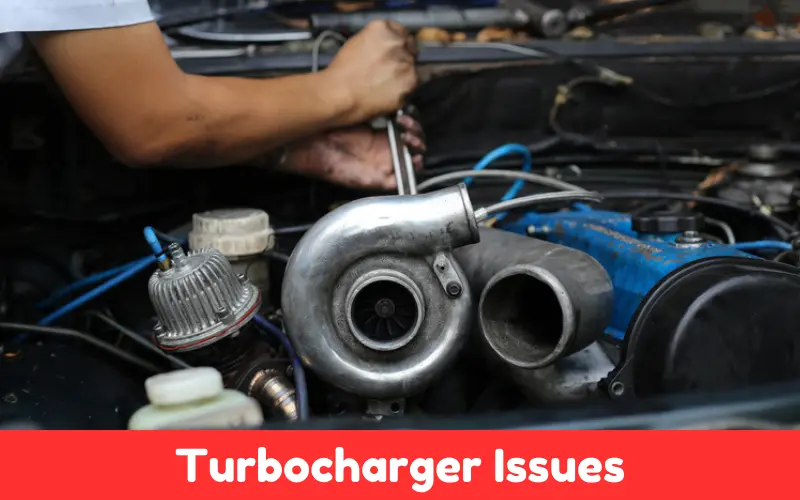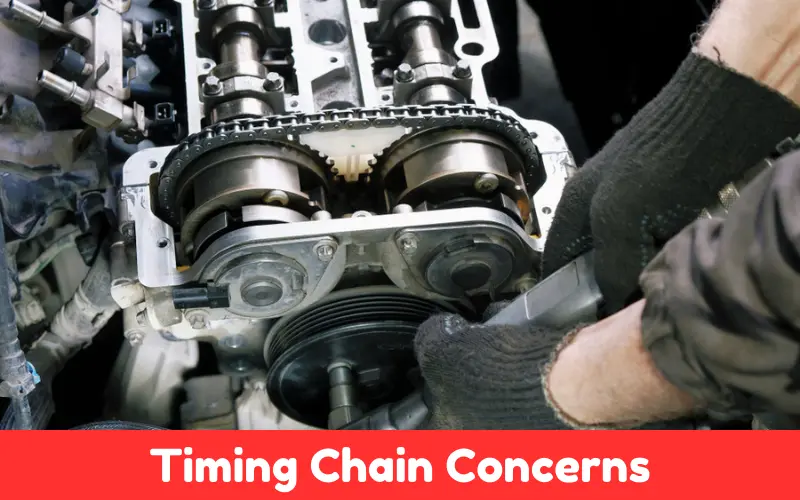The Ford 2.3 EcoBoost engine is renowned for its power and economy. This engine is used in models like the Ford Mustang and the Ford Escape. While the technology is advanced, it’s hardly invincible.
The 2.3 EcoBoost engine presents a number of potential issues for an owner to address, from turbo failures to oil consumption and cooling concerns. We’re going to answer the burning question regarding Ford 2.3 EcoBoost problems.
As we go through these common problems with the 2.3 EcoBoost engine, we’ll also discuss what you can do to prevent these issues.
Article Summary
- How Good is the Ford 2.3 EcoBoost Engine?
- Ford 2.3 EcoBoost Problems
- FAQs on Ford 2.3 EcoBoost Problems
- What Are the Signs of A Failing Turbocharger in the Ford 2.3 EcoBoost Engine?
- How Often Should I Change the Oil in the Ford 2.3 EcoBoost Engine?
- What Can I Do To Prevent Carbon Buildup?
- How Can I Tell If My Ford 2.3 EcoBoost Engine is Overheating?
- What Maintenance Steps Should I Follow To Keep the Timing Chain in Good Condition?
- Conclusion
How Good is the Ford 2.3 EcoBoost Engine?
The 2.3 L Ford EcoBoost engine is acclaimed as both exhilarating to drive and very economical.
This inline four-cylinder turbocharged and direct ignition injected power plant offers a satisfying blend of both power and efficiency aimed at a wide range of vehicle applications, from sporty models to practical yet stylish crossovers.
Servicing both the Mustang and the Escape, it delivers substantial power with good torque (350 Nm) and horsepower (310 hp) while turbocharging optimizes breathing to satisfy the high performance internal combustion needs.
Smaller than the markedly larger 5.4 L V8 engine of this sporty drive, the 2.3 L EcoBoost offers techniques for syphoning more from the fuel.
Based on reputable direct injection technology, it helps produce richer combustion efficiency and reduces lag time.
Fuel economy is improved while horsepower remains at high levels, which is needed for a good performance feel.
The resulting acceleration and well rounded engine feel are superb to drive, and its small displacement helps keep running costs down.
The 2.3 L Ford EcoBoost turbocharged petrol engine is a winner in the high speed arena and will power the new medium sized Mustang were it to be exported to Britain.
Overall, it offers an excellent balance for drivers assigning importance to vehicular dynamics yet is frugal enough for most owners seeking a spirited drive.
Ford 2.3 EcoBoost Problems
The Ford 2.3 EcoBoost engine is known for its power and efficiency. Whether you find it in the Ford Mustang, the Ford Escape, or some other Ford vehicle, it packs a nice punch without using as much gasoline as some other engines.
Of course, like other engines, there are also problems with the Ford 2.3 EcoBoost. In this post, we’ll share some common problems with the Ford 2.3 EcoBoost engine and how to fix them.
Turbocharger Issues
The most common issue with the 2.3 EcoBoost has been the turbocharger. Owners have experienced turbo lag, low boost pressure, and even turbocharger failure, which have often been attributed to a lack of maintenance or bad components.

- Solution: Check and change your oil at the recommended intervals. Don’t let dust and dirt accumulate in your air filters. If your performance significantly drops, it might be prudent to take it in for a condition check.
Oil Consumption Problems
A second complaint concerning 2.3 EcoBoost engines is excessive oil consumption. Some owners have claimed that their engines use too much oil, which can cause significant engine damage if it is not rectified.
- Solution: Check your oil level regularly and add oil as necessary. High quality oil and regular oil changes can reduce this problem. If your car seems to be using more oil than usual, check with a mechanic for a cause worn piston rings or valve seals are common culprits.
Fuel System Concerns
Carbon buildup in this intake valve during the direct injection process of the 2.3 EcoBoost engine will eventually interrupt engine performance and efficiency.
- Solution: Run good gas and consider a fuel additive that cleans the intake system. Some owners have chosen walnut blast (periodically clean intake valves) to maintain good valve functionality.
Cooling System Problems
Another common issue I see with the 2.3 EcoBoost is overheating. This can be caused by a handful of things, usually cooling system related, such as a bad thermostat, radiator leaks, or water pump failure.
- Solution: Check your cooling system especially radiator and coolant levels frequently for leaks. If you notice rising engine temperatures or steam coming out, pull over. You don’t want to risk damaging your engine.
Timing Chain Concerns
Some users have reported timing chain issues in the 2.3 EcoBoost engine. Timing chain issues can manifest in various ways, including rattling noises from the engine, lackluster performance, and stalling.
Some users have even found themselves stranded on the side of the road due to a faulty timing chain.

- Solution: Follow your timing chain’s maintenance schedule, including proper inspection and servicing. If you begin to hear noises from your engine that seem out of the ordinary or notice your vehicle’s performance has changed, have the timing chain evaluated by a mechanic.
FAQs on Ford 2.3 EcoBoost Problems
What Are the Signs of A Failing Turbocharger in the Ford 2.3 EcoBoost Engine?
Warning symptoms of a failing turbo can include stalling from lag, less power and acceleration, inappropriate whistling or grinding noises, and excessive exhaust smoke. If you are experiencing any of these symptoms, it is a good idea to have the turbo checked by a mechanic.
How Often Should I Change the Oil in the Ford 2.3 EcoBoost Engine?
Check the oil every 3,000 to 5,000 miles (change it according to the manufacturer’s guidelines, which is often every 7,500 to 10,000 miles), and make sure you’re always using the oil that’s called for in the vehicle’s owner manual.
What Can I Do To Prevent Carbon Buildup?
To reduce carbon deposits, fill up with the best quality petrol available and insert a fuel additive every few tanks to maintain a clean intake system. Regular care, probably in the form of professional cleaning, such as walnut blasting, is essential to prevent deposits and maintain engine performance.
How Can I Tell If My Ford 2.3 EcoBoost Engine is Overheating?
Warning signs include the temperature gauge increasing, steam or smoke rising from the engine, the distinctive smell of coolant, and a warning light inside the cockpit. If you suffer any of these, get off the road and check the cooling system for leaks or anything else wrong.
What Maintenance Steps Should I Follow To Keep the Timing Chain in Good Condition?
Have your timing chain checked for wear according to the manufacturer’s instructions. Regularly listen to noises to look for any changes in engine performance. If you hear rattling sounds, experience slower acceleration, or have other concerns, have your mechanic check your timing chain to prevent engine damage.
Conclusion
Although the Ford 2.3 EcoBoost engine is a terrific performer and fuel efficient engine, it’s not invincible.
However, if you are aware of it, give it proper care, and address potential problems in a timely manner, your EcoBoost engine will serve you reliably for a long time.
If you encounter any of the above listed problems and questions, don’t hesitate to bring your vehicle to your dealer or a professional mechanic.

